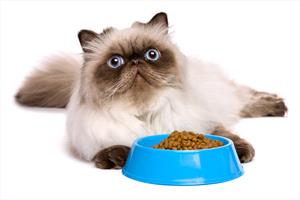Pet food marketing can get confusing. The labeling does not provide detailed nutritional information and it’s easily misunderstood by consumers. Try as you might, sometimes reading the label doesn’t give you enough answers. However, the more you know about what pet food labels indicate – and don’t – the better off your pet will be.
What is AAFCO?
AAFCO is the go-to organization for understanding animal feed, including food for pets. It does not regulate or inspect anything, nor is it a government agency. It is a group whose members are government agencies representing the 50 states, Canada, and the federal government. It is not a regulatory body and has no ability to monitor or enforce specific food manufacturing procedures. Animal feed specialists indicate to them what is appropriate for a specific species, and AAFCO provides model feed laws. AAFCO does not approve or certify any pet food, treat, or supplement products. The FDA, not AAFCO, regulates pet food, and FDA is a member of AAFCO.
State feed control officials can choose to adopt these model feed laws – if they do, then monitoring and enforcement duties are the responsibility of the individual state. Pet food manufacturers that sell food must comply with all relevant federal or state laws. Most pet foods sold in multiple states will comply with the AAFCO guidelines.
AAFCO relies on current scientific knowledge to provide guidelines for pet food composition which, if followed, minimize the risk of malnutrition. On the other hand, the FDA enforces food safety through the Federal Food Drug and Cosmetic Act, which demands that pet foods, like human foods, be “pure and wholesome, safe to eat, produced under sanitary conditions, contain no harmful substances, and be truthfully labeled.” Therefore, pet food manufacturers are legally responsible for providing nutritionally adequate, safe, and wholesome products that conform to local, state, and federal law.
AAFCO requires nine components to be printed on a pet food label:
- Brand and product name
- Net quantity statement
- Manufacturer or distributor information
- Calorie content statement
- Energy content on a kcal/kg and kcal/common unit as fed basis as well as how this was determined (measured or calculated).
- Nutritional adequacy statement
- Specifies whether the product carries a complete and balanced claim, and if so, how the claim was substantiated as well as the species and life stage for which the product is intended.
- Guaranteed analysis
- Minimum crude protein and crude fat and maximum moisture and crude fiber (as fed basis) are required; other nutrients are optional.
- Ingredient list
- Must be listed in descending order of weight; ingredients must be as defined by AAFCO; however, it is not possible to tell the relative contributions of ingredients to any particular nutrients (the ingredient list is not a recipe). Note that ingredients, as defined in AAFCO, are not often similar to those typically used/defined for human foods; for example, “chicken” must include both flesh and skin and can include bone.
- Species designation
- Feeding directions
- Must be given for each life stage if the diet is formulated for more than one.
- Target animal weights can be given as wide ranges, and no requirement for a specific equation to use to determine the energy needs of target animals.
What are the different AAFCO nutritional adequacy designations for pet foods?
There are four possible AAFCO nutritional adequacy statements that can appear on pet food labels. These must be printed verbatim as one of the following:
- [Diet X] is formulated to meet the nutritional levels established by the AAFCO [Dog /Cat] Food Nutrient Profiles for [gestation/lactation/growth/maintenance/All Life Stages]

- If the life stage is growth or all life stages, the claim must also include one of the following depending on the calcium content of the product (maximums vary):
- “including the growth of large size dogs (70 lb or more as an adult)”
- 2. “except for growth of large size dogs (70 lb or more as an adult)”
How are AAFCO feeding trials conducted?
The guidelines for an AAFCO feeding trial vary depending on the diet type being evaluated. There are four protocols: maintenance, growth, gestation/lactation, and all life stages. Although the minimum standards for each type of trial must be met, companies may add on other components to a feeding trial, such as plasma amino acid measurement, digestibility studies, full blood chemistry panels, and complete blood counts to gain additional information about the suitability of their diets for the life stage being tested.
Foods can be put through AAFCO feeding trials even if they do not qualify for a “formulated to meet AAFCO” feeding statement due to deficient or excessive levels of nutrients. One example is veterinary therapeutic diets formulated for chronic kidney disease, which are intentionally formulated to contain phosphorus (+/- protein) at concentrations below the AAFCO Food Nutrient Profiles for adult maintenance; many of these have passed maintenance feeding trials and thus have a “feeding trial” nutritional adequacy statement on the bag. If they have not undergone feeding trials, they must carry the statement: “This product is intended for intermittent or supplemental feeding only.” Such diets are not allowed to reference the AAFCO Food Nutrient Profiles on the label. Theoretically, the flip side is that diets that fail feeding trials but contain nutrient levels within the specified minimum and maximum concentrations per AAFCO Food Nutrient Profiles can be marketed with a “formulated to meet” adequacy statement. Ideally, diets are formulated to comply with the concentrations specified by the AAFCO Food Nutrient Profiles and then pass appropriate feeding trials.
For adult maintenance canine and feline diets, the feeding trial guidelines are:
- 8 animals older than 1 yr. must start the test.
- At the start all animals must be a normal weight and health, and weight is monitored weekly. Complete veterinary examinations are mandated at the initiation and completion of the test.
- A blood test is to be taken from each animal at the start and finish of the test for four parameters: (hemoglobin, packed cell volume, alkaline phosphatase, and albumin).
- For 6 months, the animal must only eat the food being tested.
- The animals finishing the test must not lose more than 15 percent of their body weight.
- During the test, none of the animals used are to die or be removed because of nutritional causes.
- 6 of the 8 animals starting must finish the test.
- Data are compared to a concurrent control group or to historical colony averages
For growth canine and feline diets, the feeding trial guidelines are:
- 8 animals NO older than 8 weeks must start the test. Juvenile animals should be obtained from at least 3 dams.
- At start all animals must be normal weight and healthy, and weight is monitored weekly. Complete veterinary examinations are mandated at the initiation and completion of the test.
- A blood test is to be taken from each animal at the start and finish of the test (hemoglobin, packed cell volume, alkaline phosphatase, albumin).
- For 10 weeks, the animal used must only eat the food being tested.
- During the test, none of the animals used are to die or be removed because of nutritional causes.
- 6 of the 8 animals starting must finish the test.
- Data are compared to a concurrent control group or to historical colony averages
For reproduction canine and feline diets, the feeding trial guidelines are:
- 8 animals older than 1 year and on at least their 2nd heat must start the test
- At the start all animals must be normal weight and healthy, and weight is monitored weekly. Complete veterinary examinations are mandated at the initiation and completion of the test. Offspring are examined within 72 hours of birth and at the end of the test.
- A blood test is to be taken from each animal at the start and finish of the test (hemoglobin, packed cell volume, alkaline phosphatase, albumin).
- Litter size is recorded.
- From the onset of estrus to 4 weeks after parturition, the animal (and offspring) used must only eat the food being tested.
- During the test, none of the animals used are to die or be removed because of nutritional causes.
- 6 of the 8 animals starting must finish the test.
- Data are compared to a concurrent control group or to historical colony averages.
Do AAFCO feeding trials accomplish what they claim to accomplish?
Many pet owners and clinicians have raised the concern that AAFCO feeding trials do not represent what really happens in a pet’s life, i.e., that feeding a diet for six months is not the same as feeding a diet for 10 years. That is true. However, although AAFCO trials are imperfect, they do identify most serious acute and semi-acute nutritional deficiencies or excesses, and some minor ones. Furthermore, manufacturers are free to supplement the minimum protocol requirements with additional measures of nutritional adequacy. Also, consider that diets for growth, gestation/lactation, or all life stages get tested more rigorously compared to maintenance since the nutritional demands of those animals are greater.
Evaluation of diets under AAFCO guidelines also includes an examination of the nutrient content of the diet being tested. The nutrient content can be determined either by testing a sample of the finished diet or by using the nutrient content of the individual ingredients in the food to calculate the diet composition. The latter is less desirable, since ingredients are naturally variable in nutrient content and because processing and nutrient interactions could alter bioavailability (how much can actually be absorbed and used by your pet’s body) in the final diet. There is no requirement for either in vivo or laboratory testing of pet food products if the formulation method of substantiating nutritional adequacy is used.
Some companies have performed other in vivo testing (in-vivo meaning taking place within a living thing) and even lifelong feeding trials to demonstrate that their diets provide complete and balanced nutrition for the expected feeding duration (i.e., “for life”).
How can you identify the pet foods that have undergone “more rigorous” testing of their pet food, rather than just the AAFCO statement on the bag?
Unfortunately, you can’t. Even veterinarians can’t. The pet food label is really a legal document and is not designed to convey significant nutritional information. As much as some sources (such as internet ranking lists) would like it to be possible, you cannot evaluate ‘quality’ from the label, especially from ingredient lists. You need to consider the manufacturer (reputation, experience, investment in AAFCO trials and research, etc.), cost, availability, and how your pets are doing on various diets.

Board-certified veterinary nutritionists in clinical practice are alerted to dietary issues with specific diets because of extensive interaction with clients, practitioners, and each other. Therefore, these specialists are often a reliable resource for determining which diets are causing disease problems.
In addition, the World Small Animal Veterinary Association Nutrition Toolkit developed by the WSAVA Global Nutrition Committee provides many useful nutrition resources including Recommendations on Selecting Pet Foods. This document lists eight questions to help owners assess pet foods:
Factors to consider about a brand:
- Employment of a full-time qualified nutritionist (Ph.D. in animal nutrition or board-certified by the American or European specialty veterinary colleges).
- Who formulates the diets and what are the credentials of this individual
- Details of quality control measures and finished products
- Availability of any product research (published in peer-reviewed journals or elsewhere).
Things to look for on a pet food label:
- Nutritional adequacy statement: Is the diet balanced, and does it meet the needs of the individual pet (is a diet intended for a puppy suitable for meeting the needs during growth?)
- Calorie content
- Company contact information
- Who makes the food?
It is ideal for a manufacturer to have a qualified nutritionist as a full-time employee rather than just as a consultant. Dr. Cailin Heinze, a board-certified nutritionist, additionally prefers companies that perform testing above and beyond AAFCO trials, especially with veterinary therapeutic diets. Furthermore, Dr. Heinze looks for company longevity as a sign of a successful track record and is critical of “guerrilla marketing” in pet supply stores (aggressive, emotion-based strategies directly to consumers). Finally, she looks for companies willing to share full nutritional profiles (e.g. full or typical analysis) of their diets rather than just a guaranteed analysis, and provide updated information with regular batch testing.
Understanding what’s best for your pet isn’t always easy. Oftentimes the only way to get a clear answer to your question is to telephone (not email) the manufacturer. However, the best chance for your pet’s good health is to begin with food bearing an AAFCO nutritional adequacy statement on its label.

